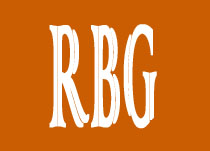 |
|
|
"Small Project Partnering" ... by Gary Bates, PE, F.ASCE |
|
|
|
|
|
|
|
The concept of Partnering only works on large, complex projects! Wrong! Large projects certainly have the justification for Partnering, but so do small projects.
Over the past sixteen years, most of the over 200 Project Partnering Workshops which I have had the privilege of facilitating, have had budgets in excess of $10 million and often hundreds of drawings to define the constructed facility. In the kickoff workshops associated with these Partnerships, there were often as many as 10-15 organizations represented and up to 65 total participants in a workshop.
However, what is the justification and how do you approach Partnering when the construction budget is only $1-2 million, the singular design firm has only 3-4 months to complete the design, and the competitively awarded General Contractor has only 8-10 months to complete the construction?
Simply stated, the justification and approach for both are based on the same principles. The differences between the large or very large versus small to medium-size projects are just a matter of degree. That may sound like gross over simplification, but let us examine the issues.
The real justification for any Partnering is to ameliorate adverse conditions that have become commonplace and inhibit success on many design / construction projects. This is accomplished through Partnering by ...
|
|
|
reducing the number of claims and avoiding litigation among the many project stakeholders (owner, user, designers, constructors, suppliers, insurance companies, regulatory agencies, the general public, and others). |
|
|
|
controlling the cost growth of the project. |
|
|
|
completing the project, or phases, within or ahead of the contract’s scheduled completion time. |
|
|
|
delivering the functional and aesthetic quality expected by all. |
|
|
|
creating a cooperative and safe environment where the work becomes enjoyable rather than a burden or an unreasonable risk. |
|
|
|
developing problem-solving / decision-making processes where consensus dominates and win-win solutions are always the goal. |
|
|
The question becomes then, how small must a project be before these changes are not desirable? The answer to the above question is that no project is really too small for the principles of Partnering to be the foundation for success in the eyes of all stakeholders, not just the stakeholder with the most power or leverage. Furthermore, I contend that these changes are not just desirable, but absolutely necessary to improve our industry and raise it from the legal abyss that it has sunk into over the last two-three decades.
What are these foundational principles on which Partnering is based, regardless of the project size?
They are:
|
||
|
|
Shared goals, arrived at through consensus—The only way to accomplish win-win solutions to problems. |
|
|
|
Mutual trust and respect among stakeholders—This is mandatory. |
|
|
|
New attitudes and behavior patterns, developed from new paradigms—Must be in place. |
|
|
|
New means and methods of effective communication—These must accompany adoption of all other basic principles. |
|
|
|
Commitment from top to bottom of all stakeholder organizations—This is required. |
|
|
What does it take to develop principle-centered working relationships among the various stakeholders on a project? The answer, of course, varies greatly depending on the organizations and individuals involved.
Philosophically, I suggest that if each organization and its representatives are willing to openly deal with two strategic issues, the process of developing principle-centered working relationships is not all that difficult.
Those two strategic issues are:
|
||
|
|
How important are the on-going relationships among the various organizations and individuals involved? And ... |
|
|
|
How does each organization and its individual representatives really define winning and losing on all of the project issues that must be dealt with? |
|
|
The answers to these questions determine the degree of difficulty among two or many organizations and individuals in developing shared goals, working cooperatively, communicating effectively, and trusting one another.
Since I cannot answer these questions for all of the teams that must work together, let me deal with the approach taken for Partnering on large projects and suggest alternatives for each step on smaller projects.
The Partnering Kick-off Workshop:
This event occurs at the beginning of the design or construction phase and usually has several participants from most of the known stakeholder organizations. The typical duration of this activity is one-and-one-half to two days. An outside, neutral party is almost always asked to facilitate the workshop.
For a small project, this workshop is still a critical event for the Partnering process. I suggest that an outside facilitator be used, but reduce the workshop duration to one day. An afternoon and evening session with an informal dinner together may suffice in some circumstances. Using a large conference room of one of the stakeholders may be appropriate, although I still prefer a neutral site, as I always recommend for large project workshops.
While the stakeholders on small projects may feel that the cost is prohibitive, one experience with Partnering on a small project should convince them otherwise. The improvements to the design and/or construction processes will make the time commitment and small out-of-pocket costs (to be shared by the stakeholders) seem insignificant long before the project is complete. Perhaps the car repair commercial showing an engine with different price tags for each major repair, along with the slogan “you can pay me now or pay me later” is a clear analogy. Organizations dealing with small projects can view the cost of Partnering as a major repair (i.e. expense) or they can view Partnering as preventative maintenance that builds long-term successful relationships. Successful projects and their stakeholders tend to look for new opportunities to work together, which over the long haul reduces overhead in areas such as marketing, legal fees, collection costs, support staff, and paperwork.
The key elements of the normal workshop should still be covered, just reduced in scope because of the reduced size of the project (and probably fewer participants). Those key elements are:
|
||
|
1. |
Development of a mission statement and goals (Partnership Charter) for the Partnering Team. |
|
|
2. |
Conflict management techniques and specific procedures to resolve conflict among stakeholders. |
|
|
3. |
At least one short team-building exercise. |
|
|
4. |
Small group discussions on some critical issues that face the project team. |
|
|
5. |
Some techniques to improve team communications. |
|
|
6. |
Means and methods to assess the progress of the Partnering during the project. |
|
|
7. |
Planning of Partnering activities that should occur after the kick-off workshop. |
|
|
The emphasis of Partnering on small projects must be on the justification issues listed previously and the benefit of improving working relationships among the stakeholders, not just for the project in question, but for the long haul.
As all stakeholders get more experienced in Partnering, develop the paradigms, attitudes and cultures that evolve from this experience, the need for kick-off workshops will not be removed. However, it should be possible to shorten the period of time required to develop a team spirit, create a Partnership Charter and discuss critical project issues in advance of them developing into debilitating conflict. This reduction in time doesn’t mean the workshop will be reduced to a one- to two-hour event, but half-day or certainly one-day workshops could be more normal at some time in the future.
I recommend that the size of your projects not be the sole criteria for deciding to do Partnering. If your small projects, as well as your large ones, are not developing these principle-centered working relationships among the stakeholders, then you are missing out on a great opportunity to enhance the success of all your projects.
Good Partnering!
Gary D. Bates, PE, F.ASCE
|
||
|
|
||
|
MORE SERVICES WE OFFER ... > Strategic Planning and Business Planning > Financial Restructuring and Profitability Analysis > Conflict Resolution, Mediation and Arbitration > Ownership Transition > Work-out Specialties > Start-up Ventures > Seminars and Training Programs > Keynote and After Dinner Speeches by Gary Bates > Special Assignments
|
||
|
|
||
|
Jerry Roenker and Gary Bates, Partners ROENKER BATES GROUP Management Consultants CATALYSTS FOR IMPROVED PERFORMANCE 4212 Airport Road, Suite 207, Cincinnati, OH 45226 Tel-513/984-6653, Fax-513/984-3160
|
||
|
|
||
|
This site created and maintained by Pro Secretarial, Fairfield, OH |
||
